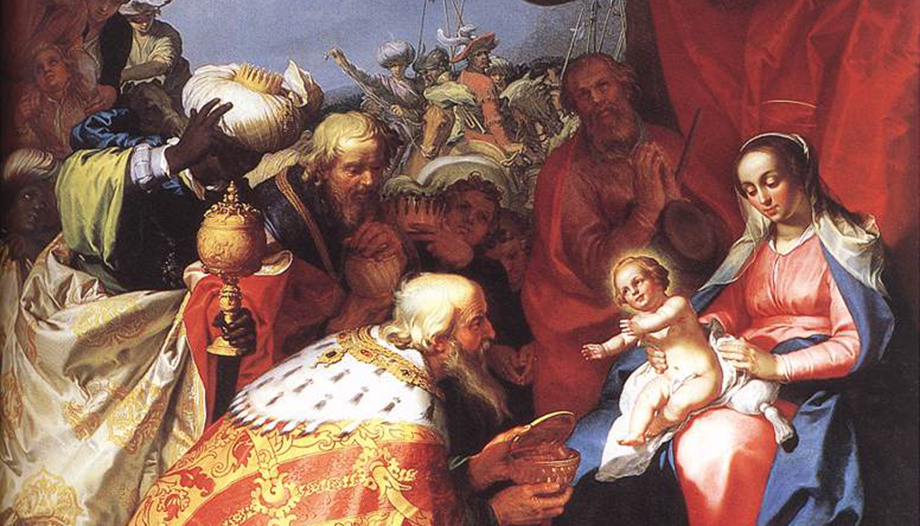The original text of this preface was obtained from the union of two very ancient prefaces: the first is found in the Veronese Sacramentary and, according to some authors, is the work of Pope Damasus (366-384), while others place its origin in the 5th century; the second text is present in the ancient Gelasian Sacramentary, as well as in the Ambrosian tradition.
Quia ipsum in Christo salútis nostræ mystérium
hódie ad lumen géntium revelásti,
et, cum in substántia nostræ mortalitátis appáruit,
nova nos immortalitátis eius glória reparásti.
For [Today] in Christ, the light of the world,
you have revealed to the nations the mystery of salvation,
and in Him who appeared in our mortal flesh,
you have renewed us with the glory of divine immortality.
Epiphany Preface
The text is very well constructed, since there are two coordinated parts. The first is contained in the first two stanzas of the text and affirms that, in Christ, the Father revealed the very mystery of our redemption, so that the nations might be enlightened by him.
As we saw in the Christmas Preface IThe theme of light also returns in this Preface: if there it was the light that illumines the mind of each person, here the manifestation of Christ takes on a universalist tinge, for he is the light that illumines all nations; after all, the very heart of this feast is precisely the manifestation of God not only to the chosen people, but to all men, represented by the Magi from the East to worship the King of the Jews.
The content of this illumination is the revelation of the mystery of the salvation of the human race in Christ Jesus. His person, his actions, his words, his whole life, but also and above all his death and resurrection are the way that the Father, in his design of ineffable love, has chosen to bring us salvation.
The theology of the Incarnation
The second part of the Preface explains that this is possible thanks to the reparation (reparasti) made by the Incarnation (apparuit). Here we return to the idea of the admirabile commercium, that admirable interchange, which underlies our salvation and which we have already seen in the Christmas Preface IIIThe substantia nostrae mortalitatis is saved by the immortalitatis eius gloria, which is expressed here by a beautiful antithetical parallelism in the form of a chiasmus: the substantia nostrae mortalitatis is saved by the immortalitatis eius gloria.
In a few words the whole theology of the Incarnation is summed up, according to which "what is not assumed is not saved, but what is united to God is also redeemed" (St. Gregory of Nazianzus, Epistle 101).
This is expressed in a very plastic way with the use of the terms substantiaas if to indicate the materiality of mortal human nature, and gloryThe link between the two parts of the Preface is thus made manifest: the true epiphany is the EncarnacionThe Father, through the flesh of Christ, opens to humanity the possibility of salvation, thus tearing away the darkness that enveloped human life with the light of his eternal splendor.
Pontifical University of the Holy Cross (Rome)











